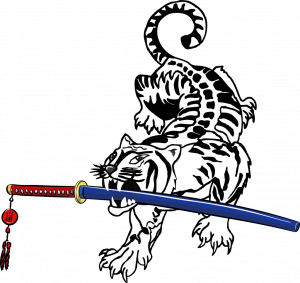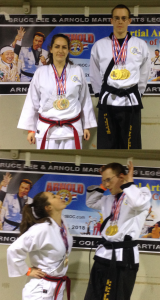 Much has been said about the benefits of martial arts for building focus, discipline, confidence, and esteem. These are true but not often illustrated when as a student is promoted. These are artifacts of the holistic personal development taught through the martial arts. The remainder of this article will present and illustrate the personal development concepts that build the character of the student.
Much has been said about the benefits of martial arts for building focus, discipline, confidence, and esteem. These are true but not often illustrated when as a student is promoted. These are artifacts of the holistic personal development taught through the martial arts. The remainder of this article will present and illustrate the personal development concepts that build the character of the student.
These concepts through physical activity first, although we can “see” them in sports and similar physical activities. This is just the beginning, though. One of my Aikido teachers commented that humans learn in three levels – physical, emotional, spiritual – as lessons are continued throughout your life. His example was love. People do physical things first – hold hands, hug, kiss, then they connect emotionally – empathy, trust, inside jokes, and finally, spiritually – not necessarily religion, but a deep feeling of connection that extends beyond the two people.
The physical learning can be seen in every sporting event and is much easier to teach. The conditioning of the athletes is very high, even in high school sports. Their performance during a game is remarkable and incorporates all of the concepts mentioned earlier. Truth, though, is hidden behind the game. The game only shows the result of these concepts. A broader view has been presented to me by different martial arts teachers over my 40+ years of training.
“The physical techniques are only 10% of any martial art.”
Physical techniques easily transfer to movies and television. Martial arts movies and shows tend to have a training interlude that brings the viewer to the present time and peak of their abilities; actual training can be boring and takes years. Seeing that the hero/heroine put in effect to be prepared for the current challenge fills plot holes.
The more difficult parts to illustrate are in the other 90%. These are the parts that are sold as part of most martial arts schools but don’t have clearly defined concept. Here’s a few to think about.
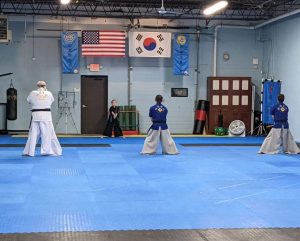 Discipline
Discipline
This one most often features a picture of a kid’s class with everyone standing at attention. Yes, they can stand still because they were told. Sadly, that’s not the real acceptance of discipline for the martial arts. Real discipline comes from the student, regardless of age, doing all of the assigned tasks without additional input from the outside (teachers, parents, peers). You can find the (martial arts) motivational statements such as:
“Don’t do your form five times and wait for the teacher to come over. Do your form until your teacher comes over.”
This is one of the sure signs that the student is developing discipline and taking ownership of their assignment. It is common in teaching martial arts to spend time with those that need the most input (corrections in any of a multitude of techniques). This type of feedback isn’t always taken well by students. The “no news is good news” intent behind this can easily challenge the confidence and esteem of a student.
I’ve had a student with me through the past 12 years (she started in the university course that I taught) and had thought during the first 10 years that I didn’t like her as I didn’t talk to much. Once she mentioned this, she immediately knew it wasn’t true or she wouldn’t still be in class. The discussion that happened with the class lead to the concept “If I talk to you” being born. If I talk to you, I’m helping you develop further. If I don’t speak to you for a time, it is because you are doing all that I’ve expecting (and probably more). This is an area in my school where few younglings continue as they don’t get enough attention or acknowledgement. If you really like and want something, how much and often do you need to be told “good job”? The true test of becoming a committed student is not needing constant attention. An illustration of discipline growth.
Confidence
That need for being told good job can be the whole issue. The curriculum, both the Korean Karate and the Korean Sword, are sufficiently challenging to be successful at tournaments. This is why my students don’t do anything different in competition. They have the latitude to do whatever they wish but usually don’t. This provides the opportunity to stress test with material that they know and do well. Confidence comes from performing well under stress. Promotion tests, tournaments, and demonstrations are all places to challenge students. The key becomes making sure that the student “sees” what was needed to prepare and succeed. This process is then transferable to many other physical (sports) and intellectual (academics) activities.
Esteem
When the student knows that they can perform when needed, they step into leadership roles. Well, sometimes being encouraged to, volun-told to do things…but I’m not always nice.
One example of this comes from having all students helping all students. It is a big martial arts secret that belt ranks truly mean that the student is responsible to help all of those who came after them. Students who are very introverted end up having to lead classes or drills. Personal development is the point here. Esteem is developed through perseverance and creating an indomitable spirit.
Taking the step past physical knowledge requires the student to teach. Material is not truly learned until it is taught. The need to develop words to describe technique leads to developing words to communicate better and to handle (various types of) conflict. Students who are decades younger than the new students may teach drills or forms. For those older students, this can be a challenge to their ego. If they can’t get past it, they leave. A recent version of this shows 9 year old Alice, mid colored belt rank (about a year away from Black), leading the basics during a class that was made up of a 2nd Dan and two 4th Dan students/instructors. (pictured here)
Other examples of developing esteem can be seen in students attending seminars and trainings with other instructors or, at an instructor level, presenting further insights into techniques or applications. They have belief in the curriculum that they learned but are seeking to develop further. They know what they don’t know and are working to change that. This holds true as they pursue their career or academic education.
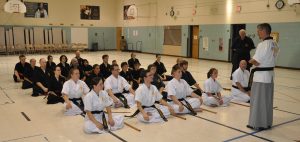 Respect
Respect
A concept that is regularly mentioned is respect. It is usually accompanied by a photo showing younglings lined up at attention and bowing. I think this version is flawed. How do you know that it is respect?
A bow (in Asian cultures) can be respectful just as a handshake can be in the Western cultures. The problem is that it may truly be only a point of etiquette but not respectful. I don’t think there is an adult that I know who hasn’t shaken the hand of someone they didn’t like because it was etiquette. I would wager that within the martial arts there are some who are still called by their title (Master, Grand Master, etc.) because it is polite. This changes from etiquette to respect when/if they can meet expectations. Those few get their titles even when not on the training floor.
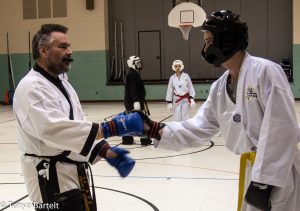 When there is little respect for partners, there are increased chances for injuries. The lack of respect can come from several reasons based upon previous life experiences…which is another article. A better illustration of respect can be seen in such things as free sparring or contact drills. These drills challenge the student’s emotions and control. The idea that, during sparring, you will get hit can be scary. Once they get hit, then they can get mad and hit back harder. This is where senior students can help as they have developed control and understand getting hit. This helps keep less emotion from coming into play. Now, sparring is intended to develop inner strength and courage, particularly when personal protection may arise. Knowing that you can get hit and be okay plus be able to hit someone when necessary is very valuable. It becomes a strong base for problem solving skills. Randy King, a premier personal protection instructor, has commented that self defense is high speed problem solving.
When there is little respect for partners, there are increased chances for injuries. The lack of respect can come from several reasons based upon previous life experiences…which is another article. A better illustration of respect can be seen in such things as free sparring or contact drills. These drills challenge the student’s emotions and control. The idea that, during sparring, you will get hit can be scary. Once they get hit, then they can get mad and hit back harder. This is where senior students can help as they have developed control and understand getting hit. This helps keep less emotion from coming into play. Now, sparring is intended to develop inner strength and courage, particularly when personal protection may arise. Knowing that you can get hit and be okay plus be able to hit someone when necessary is very valuable. It becomes a strong base for problem solving skills. Randy King, a premier personal protection instructor, has commented that self defense is high speed problem solving.
This problem solving trait translates into better control when hit by emotional attacks (from inside your circle or outside) or other such unfortunate circumstances (flat tire, car accident, health issues, career problems). Drawing upon the physical training, students can easily improve skills for daily life. The stress of sparring teaches emotional control, breathing control, and solving problems from recognizing systems and patterns.
Author: Master Robert Frankovich
As you read and enjoy the posts on this site, please consider “sharing” them! The “likes” help generate additional readership but “sharing” will help even more! Thank you for your assistance!
If you have questions, please feel free to contact me!

